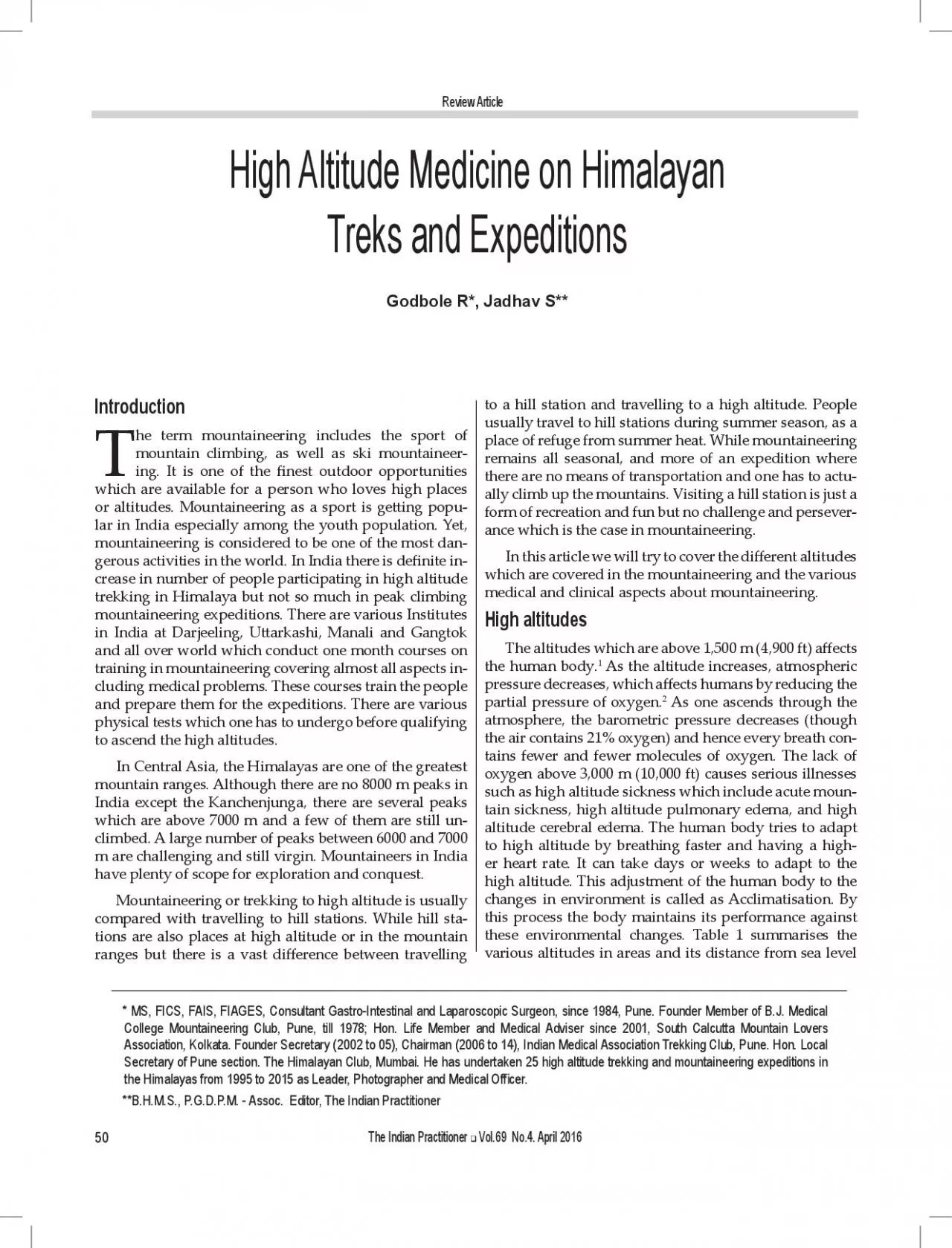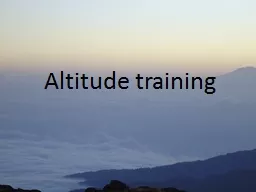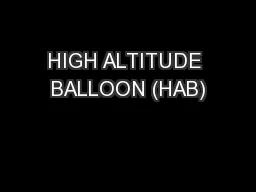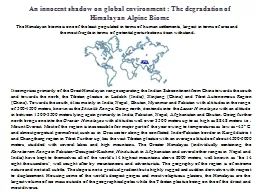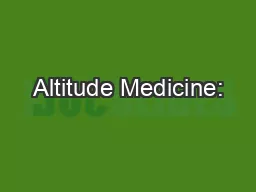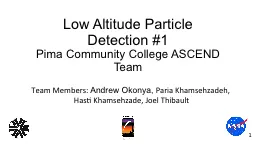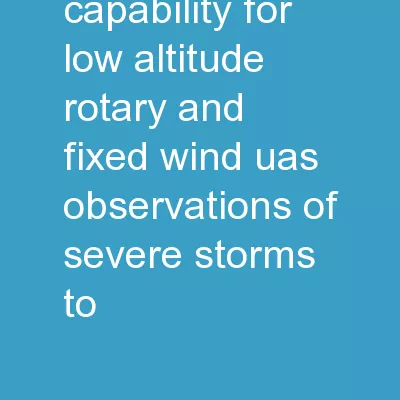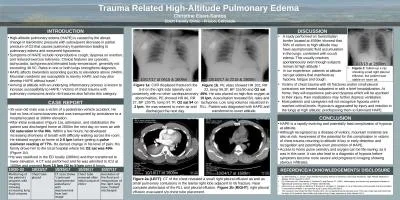PDF-High Altitude Medicine on Himalayan Treks and Expedit
Author : quinn | Published Date : 2022-10-26
Vol69 No4 April 2016 50 uration hypoxia and acclimatisation at these altitudes Table 5 summarises the ex00660066ect of high altitude on various systems of body At
Presentation Embed Code
Download Presentation
Download Presentation The PPT/PDF document "High Altitude Medicine on Himalayan ..." is the property of its rightful owner. Permission is granted to download and print the materials on this website for personal, non-commercial use only, and to display it on your personal computer provided you do not modify the materials and that you retain all copyright notices contained in the materials. By downloading content from our website, you accept the terms of this agreement.
High Altitude Medicine on Himalayan Treks and Expedit: Transcript
Download Rules Of Document
"High Altitude Medicine on Himalayan Treks and Expedit"The content belongs to its owner. You may download and print it for personal use, without modification, and keep all copyright notices. By downloading, you agree to these terms.
Related Documents

